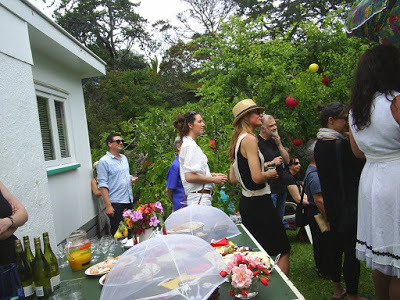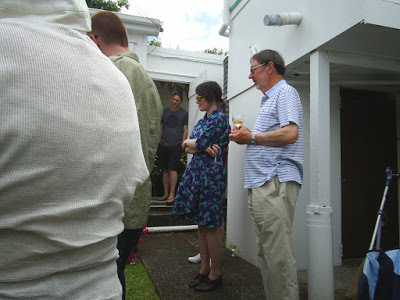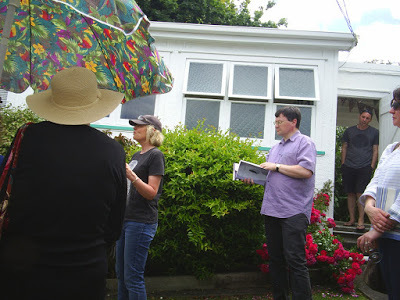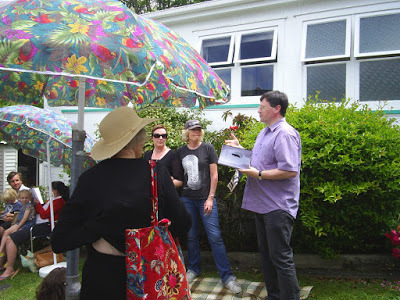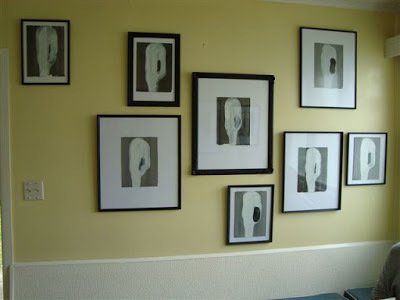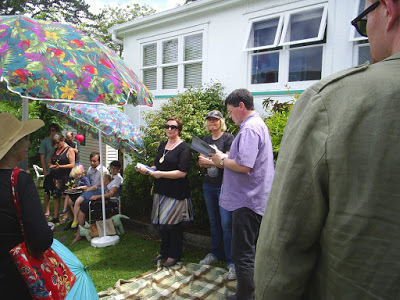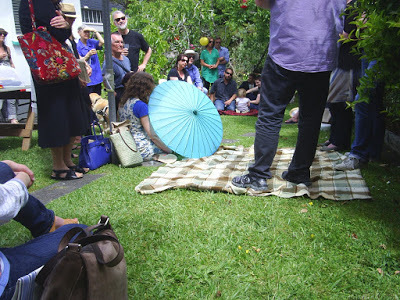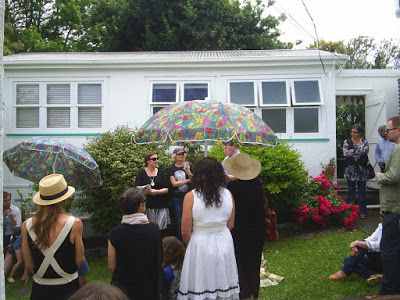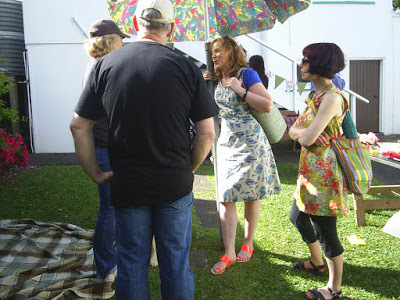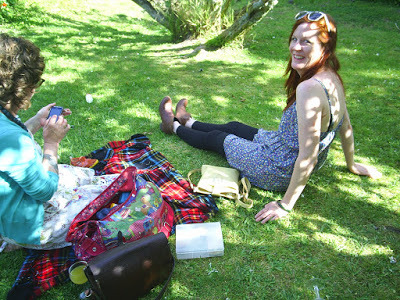Jack Ross's Blog, page 28
July 24, 2016
The Classic New Zealand Ghost Story
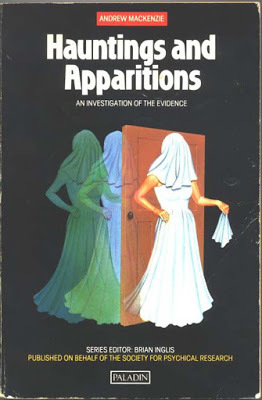
Andrew Mackenzie: Hauntings and Apparitions (1982)
Recently I’ve been reading a book called Hauntings and Apparitions: An Investigation of the Evidence (1982), by New Zealand-born writer Andrew Mackenzie. It’s a kind of compendium-cum-analysis of a number of cases collected over time by the British Society for Psychical Research, from a series edited by Brian Inglis, one of the true heavyweights in the field.
It’s a substantial and scholarly book, but perhaps the most important thing in it comes near the end, where he reports a conversation he once had with Rosalind Heywood:
When I first started writing about apparitions I made the mistake of studying them in isolation, rather than as part of the structure of psychical research as a whole. ... [T]alking over the subject with Rosalind Heywood, particularly during the last year of her life, my outlook gradually changed. I eventually realised that instead of asking, 'What is an apparition?' I should be asking, 'What is man?' It was as if we were discussing the nature of shadows instead of the nature of who or what casts the shadows. When I put this conclusion to Mrs Heywood her reply was 'But of course' [p.254]In other words, the most important thing about any haunting, or supernatural experience generally, is who it happens to. It’s rather like dream interpretation: there’s no way of decoding dream symbols until you find out what they mean to the person who’s had the dream. And if they won’t tell you, there are still a few ways of finding out.
Taking a couple of basic Freudian rules-of-thumb as our guiding points, then:
We assert most vociferously that which we’re least certain of.
The claim: “I’m a brilliant teacher,” for instance, can be translated more accurately as: “I secretly suspect I’m a terrible teacher.”We’re most haunted by that which we’ve worked hardest to deny and eradicate from our lives.
Rabid homophobia, for instance, is generally assumed to mask strong homoerotic tendencies (as in the movie American Beauty).This central principle of the return of the repressed may help to explain the preponderance of native agency in the ghost stories recorded in post-colonial countries.
On the one hand, for the coloniser, the intense guilt of having dispossessed someone of all control and ownership of their lives tends to make you portray them as full of sinister purpose and secret knowledge.
On the other hand, for the colonised, there’s a certain advantage to playing up to this scenario. When you lack power in one world, you’re forced to assert it in the other. Hence the tohungas, obeah men, voodoo priests, and even (to go back a bit) druids who allegedly channel access to the other side.
Anyway, reading Mackenzie's book got me to thinking a bit more about the local product. Here are a few of the texts I myself have collected on the subject:
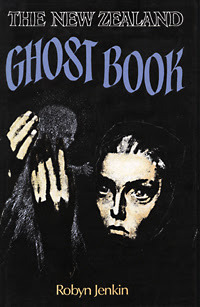
Robyn Jenkin: The New Zealand Ghost Book (1978)
Jenkin, Robyn. New Zealand Mysteries. 1970. Fontana Silver Fern. Auckland & London: Collins, 1976.
Jenkin, Robyn. The New Zealand Ghost Book. Wellington: A. H. & A. W. Reed, 1978.
Shanks, Grant, and Tahu Potiki, eds. Where No Birds Sing: Tales of the Supernatural in Aotearoa. Christchurch: Shoal Bay Press, 1998.
Shanks, Grant, and Tahu Potiki, eds. When the Wind Calls Your Name: Tales of the Supernatural in Aotearoa. Christchurch: Shoal Bay Press, 1999.
Miller, Julie & Grant Osborn. Ghost Hunt: True New Zealand Ghost Stories. Auckland: TVNZ / Reed, 2005.
Miller, Julie, & Grant Osborn. Unexplained New Zealand: Ghosts, UFOs & Mysterious Creatures. Auckland: Reed Publishing (NZ) Ltd., 2007.
Wallbank, Mark. Voices in the Walls - Living the paranormal in New Zealand. Auckland: Haunted Auckland, 2015.
Wallbank, Mark. Talking to Shadows - A New Zealand paranormal research team's search for answers. Auckland: Haunted Auckland, 2016.
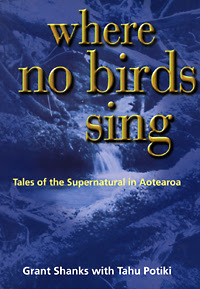
Grant Shanks & Tahu Potiki, ed.: Where No Birds Sing (1998)
I guess one’s first observation might be that such books tend to come in pairs: perhaps because they generally elicit such an unexpectedly enthusiastic response as to spawn a sequel, but then the essentially sterile and repetitive nature of such narratives becomes apparent, and the impulse dies.
The most interesting among this set of books, to me, at any rate, are the pair edited by Grant Shanks and Tahu Potiki. They seem to take the most original and homegrown view of the subject.
Robyn Jenkins' two books are standard pieces of journalism, collecting well-known - though undoubtedly useful - feature stories about the Tamil Bell, the Spanish helmet and other old chestnuts. The two books by Julie Miller and Grant Osborn are dominated by the format of the (very entertaining - though not entirely convincing) TV series that gave rise to them. Mark Wallbank's two long books record a series of investigations conducted for the Haunted Auckland website.
What one might say of these books is that they mostly echo overseas trends: the local TV show Ghost Hunt was a slightly slicker version of the Yvette Fielding and Derek Acorah's series Most Haunted . Robyn Jenkins' books resemble Australian and Canadian versions of the same thing. Mark Wallbanks' website is not unlike a host of other such image-heavy sites (as amusingly chronicled in the 2011 movie The Innkeepers .
In Shanks and Potiki's books, however - perhaps because they collect a series of (allegedly) true experiences by many different people with minimal editorial intervention - one begins to get a glimpse of what might be called the classic NZ ghost story.
The story runs essentially as follows (no one story in either book has all of these features, but very few are without one or two of them):
A young family, a farmer, or a long-lost relative of some old family moves into a new house / farm / estate. They promptly start to make changes or improvements, ignoring all warnings from neighbours / locals.
Manifestations start to appear. These can take the form of a string of bad luck, shadowy presences in the house, or just a general feeling of depression and doom.
Things start to get so bad that they are forced to ask for help. Someone from the district offers to have a word to the "old people" at the marae.
A group of elders duly appear, walk the land, recite a few words, and the trouble recedes. This may be accompanied by the restoration of a bone, a grave or an artefact which has been tampered with somehow.
Thereafter, everything runs more smoothly, in an atmosphere of mutual respect.
Alternatively, the farmer, or pater familias, refuses all help, and is either forced to move away or dies in mysterious circumstances (an upturned tractor, perhaps - or a septic wound).
First of all, one should note the strong focus on haunted spaces, rather than haunted people: these spaces can include houses, and farms, but also patches of bush (as in the title story of Shanks & Potiki's first book, "Where No Birds Sing"), river valleys, and mountain passes: wild, deserted areas, essentially.
The problems generally start due to some breach of tapu (deliberate or accidental). Entering a forbidden area or (particularly) removing a bone or a piece of carving from its seemingly accidental location in a sand-dune or old tree-trunk can lead to dire consequences.
In almost all cases the people in trouble have to talk to someone local, who brings in some elders from a nearby marae or (occasionally) further afield. They walk through the space and speak karakia, and everything settles down.
The alternative to this is death in suspicious circumstances for the unrepentant farmer who's ploughed up a tapu area, or city-slicker who won't (or can't) return a valuable artefact.
The phenomena mentioned in these stories include giant eels and dogs as well as haunted patches of bush, mysterious fires, and time-slips. All are seen to relate to Māori folklore, in one way or another.
A friend told us recently of a walk he took with his girlfriend. They started off quite late in the day, and couldn't reach the hut they were planning to stay in. Instead, they pitched their tent in an inviting piece of bush. The place made them feel so uncomfortable, though, that they just couldn't stay there. So they packed up the tent and walked on until they reached the hut. Later, discussing their experience with another tramper, they were told that the place they'd stopped in was tapu. His girlfriend in particular was quite shaken by it. He said that there was no possibility of remaining: the imperative to leave was just too strong.
Some friends of my parents once told us of an experience they had while boating on Lake Taupo, when they discovered some old cliff-paintings and artefacts. The day immediately clouded over and the waves got so high that they had to wait for some time for them to subside before they were able to get home. Everything had been sunny and bright until that precise moment.
What is one to say to such "authentic" experiences? Perhaps just that we more recent immigrants to New Zealand can never be quite unconscious of what Sam Neill, in his classic documentary Cinema of Unease (1995) refers to as "the dark, threatening land." Or perhaps Allen Curnow said it better in "House and Land" (1941), referring to:
what great gloom
Stands in a land of settlers
With never a soul at home.
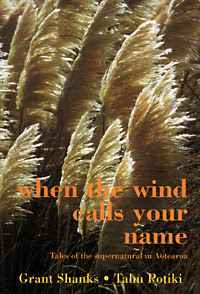
Grant Shanks & Tahu Potiki, ed.: When the Wind Calls Your Name (1999)
Published on July 24, 2016 15:39
July 19, 2016
Jack & Bronwyn's Shanghai Adventure
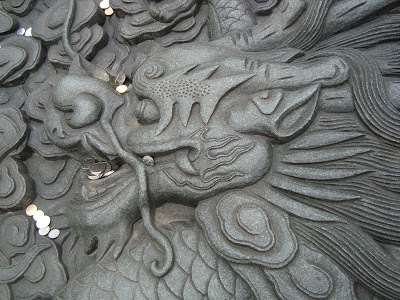
[unless otherwise specified, all photos by Bronwyn Lloyd]
We arrived in Shanghai on Monday morning (11/7): a characteristically misty day. This is the view from our window in the Guoman Hotel:
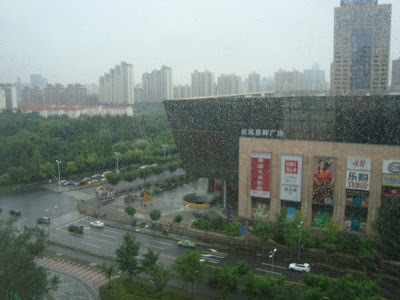
front window
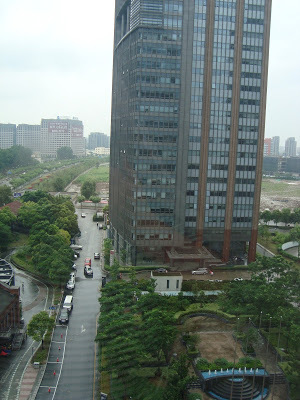
side window
We had a chance to do some sightseeing the next day, Tuesday, stopping first at the breathtaking Jing'an Temple:
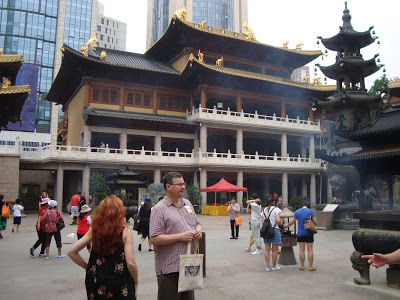
front courtyard

main steps
[photo by Paul Hinton]
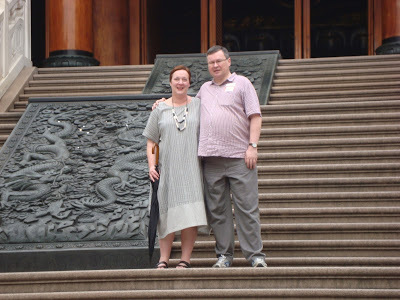
Bronwyn & Jack
[photo by Paul Hinton]
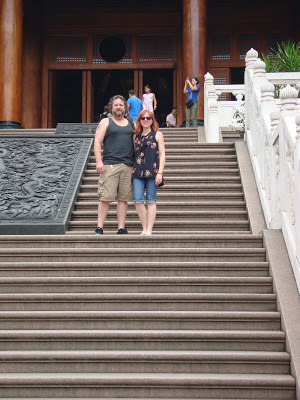
Paul Hinton & Tracey Slaughter
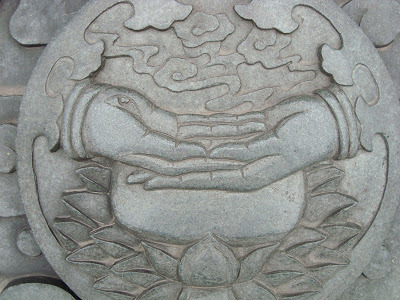
Buddha's hands
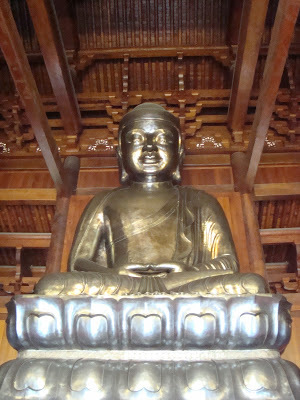
Buddha
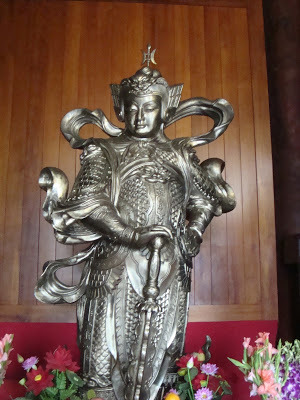
Guanyin
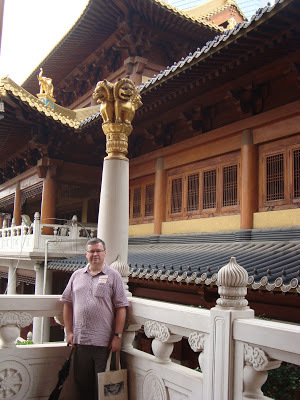
Jack

side temple

amazing detail in the wooden carvings

complexities of perspective
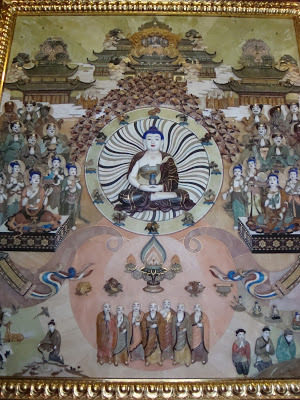
mandala picture
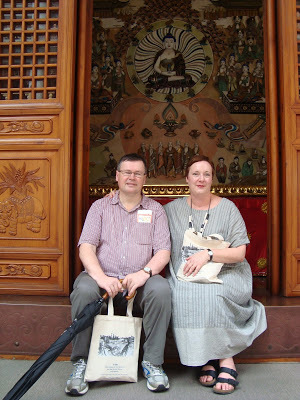
us
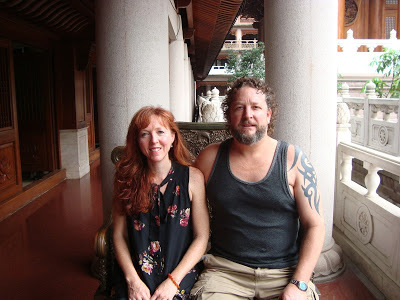
Tracey & Paul
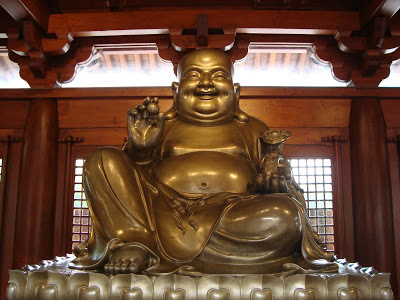
Laughing Buddha
And here we back on the top deck of the bus for the city tour:
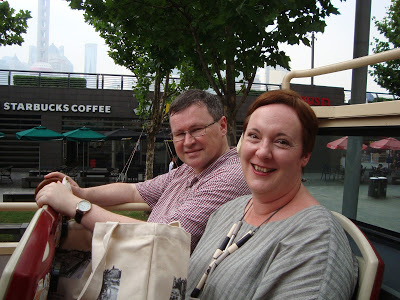
Jack & Bronwyn
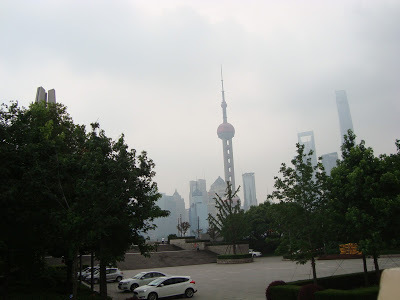
Oriental Pearl Tower
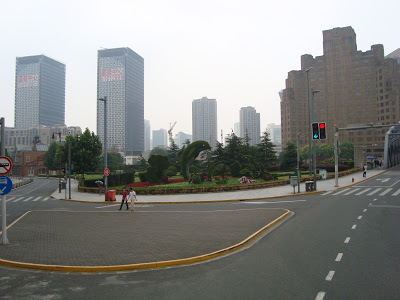
extravagant topiary
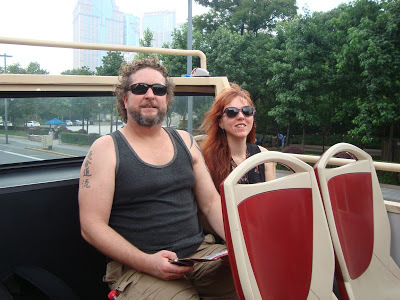
Paul & Tracey
& here we all are in the Yu Garden, hunting for bargains:
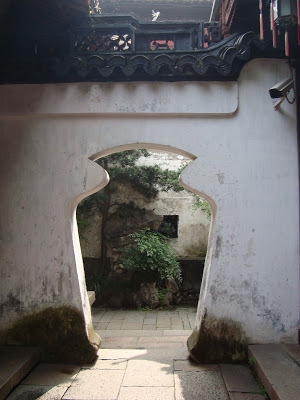
entrance

lake
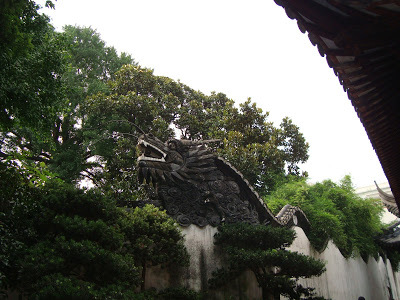
dragon
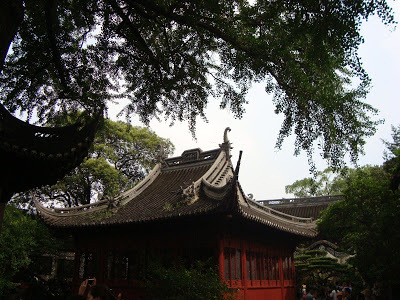
rooftop
We managed a bit of sightseeing later in the week. Here we are at the Temple of the Jade Buddha (which is one statue tourists are not permitted to photograph. It is phenomenally beautiful, though:

back of the main hall

Twin Buddhas
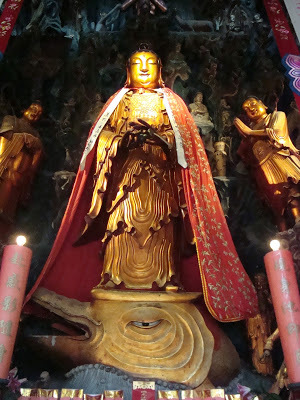
Buddha
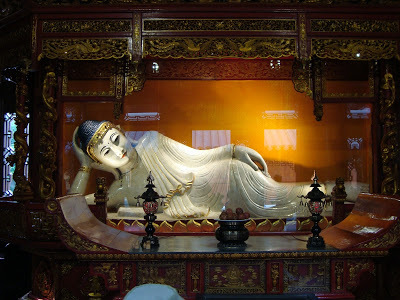
reclining Buddha

Monster
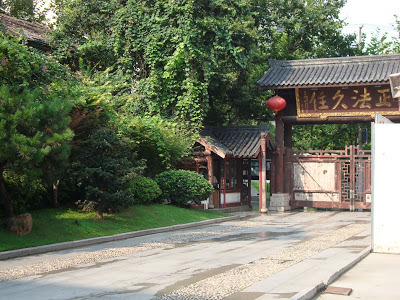
back door
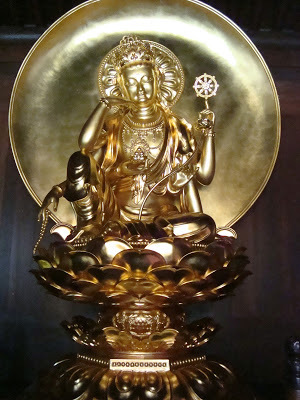
intricate goldwork
And if you're wondering why I'm looking like this, the picture below of me sampling a Mango Lassi dessert in one of Shanghai's top restaurants might offer a few clues (the statue of the pig is outside the Jackie Chan Museum, just beside our hotel):
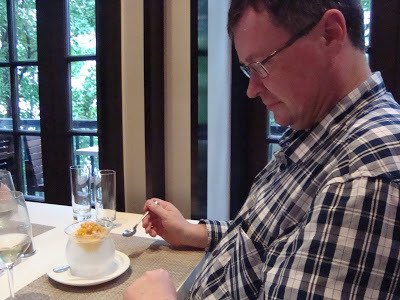
Jack sampling some advanced fusion cuisine
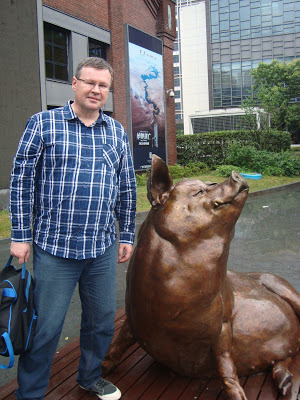
Jack & pig
Ah, beautiful Shanghai!
Published on July 19, 2016 19:43
July 8, 2016
Real Illusions: i.m. Russell Haley (d. 4/7/16)
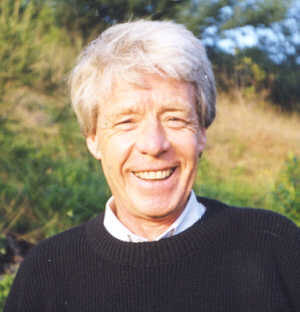
Russell Haley (1934-2016)
I've just received some rather bad news. Ian Wedde has sent out an open letter to friends of Russell & Jean Haley:
Russell died on Monday 4 July of a brain tumour, at home in Whangarei. He wanted to be cremated without any ceremony, as simply as possible, and this was done on Tuesday. There will be a celebration at his and Jean’s place in Whangarei, on Saturday 9 July.
I can't be at that celebration, unfortunately, but I would like to put a few things on record here even so. I've known Russell Haley for a long time. He was (briefly) a fellow-tutor with me in the Auckland University English Department in the early 90s. I also met up with him quite often while Jan Kemp and I were working on the Aotearoa NZ Poetry Sound Archive in the early 2000s (in which he is, of course, included).
He taught life writing for us for one semester at Albany, and I'll always remember the masterly guest lecture he delivered on the relationship between voice and personality: using a recording of Kathleen Ferrier as a starting point, then moving on to his own biography of Pat Hanly, he took the students and me carefully through every stage of a complex argument about identity.
He was always cheerful, always interesting to talk to, always full of new ideas and original aperçus. We didn't meet often, but it never seemed to matter: there was always something to add to what we'd been discussing on the previous occasion.
Of course it's mainly as a writer that Russell will survive: will continue to be with us for the long haul, I'd venture to predict.
Here's a list of his major publications. Most of them I have, though there are one or two pesky gaps still waiting to be filled:
The Walled Garden (1972) [poetry]
On the Fault Line (1977) [poetry]
The Sauna Bath Mysteries (1978) [stories]
Real Illusions: A selection of family lies and biographical fictions in which the ancestral dead also play their part (1984) [autobiography]
The Settlement (1986) [novel]
Hanly: A New Zealand Artist (1989) [biography]
The Transfer Station (1989) [stories]
The Penguin Book of Contemporary New Zealand Short Stories (1989) [edited, with Susan Davis]
Beside Myself (1990) [novel]
All Done with Mirrors (1999) [novel]
A Spider-Web Season & The Transfer Station (2000) [stories]
Tomorrow Tastes Better (2001) [novel]
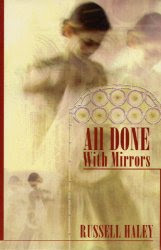
Russell Haley: All Done with Mirrors (1999)
Russell's work figures prominently in Matt Harris's Doctoral thesis on "Metafiction in New Zealand from the 1960s to the present day" (Massey, 2012), which was co-supervised by Mary Paul and myself. There is also a fascinating interview with him included as one of the appendices.
I guess he had a good innings. Somehow that doesn't seem to matter much when one hears news like this, though: Russell was just one of those people whom it's impossible to imagine gone for good: I'm sure I'll keep on expecting to run into him somewhere for quite some time to come - always with that cheeky smile and that fund of good stories and quiet, unobtrusive intelligence.
I was rereading the first few stories in The Sauna Bath Mysteries just last week. I know that sounds improbable, but it's true. It just suddenly stood out from the shelves and demanded to be read. That will probably keep on happening, too, I'm sure.
Love and good wishes go with you, Russell: and my best to all those gathered in Whangarei today, also.
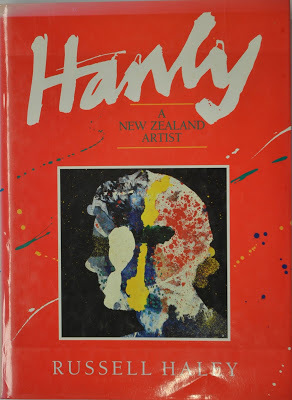
Russell Haley: Hanly (1989)
Published on July 08, 2016 14:31
July 4, 2016
Shanghai
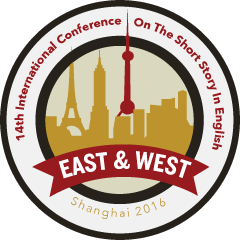
So Bronwyn and I are off to Shanghai next week to attend the 14th International Conference on the Short Story in English (July 13-16) at East China Normal University (ECNU). The title of this year's gathering is "Influence and Confluence in the Short Story: East and West." Pretty exciting, huh?
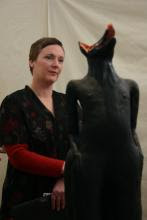
Bronwyn's Author photo
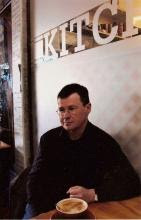
Jack's Author photo
If you're at all curious (why would you be?) about the bewildering variety of workshops and panels we're supposed to be taking part in, you can check them out here. The short version, though, is that each of us is giving a reading, is taking part in one of the plenary panels, and is chairing a couple of sessions. I'm also giving an Academic paper on "Settler & Speculative Fiction in the NZ Short Story" (sounds fascinating, no?), and Bronwyn and I are both in a panel discussing Voice in the NZ short story, chaired by our good friend Tracey Slaughter.
The conference will be fun, I'm sure. The prospect of exploring Shanghai a bit is almost equally alluring, though. Pretty much all I know about the city comes from watching (and reading) J. G. Ballard's autobiographical Empire of the Sun, but I can't help feeling that it might have changed a bit since then.

Empire of the Sun: The Bund

The Bund today
Here's the location of the conference:
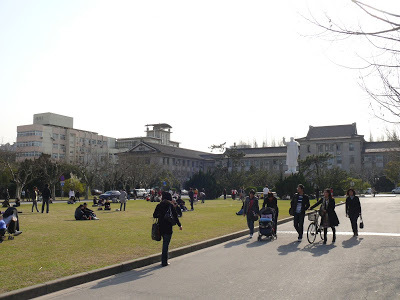
Peter Potrowl: East China Normal University (2010)
And here's our hotel:

Guoman Hotel, Shanghai
Looks pretty lux, eh? Too good for the likes of us, you'll be thinking, and I guess you're right. We're going to try to make the best of it, though. It's going to be hot (temperatures in the 30s at this time of year, I'm told) ...
Published on July 04, 2016 13:57
June 13, 2016
Tenth Anniversary (Tin)
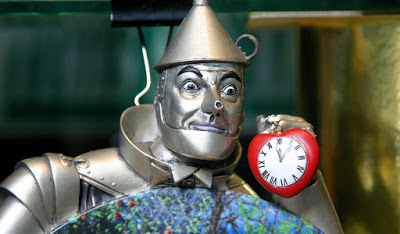
[Tin Man]
I started this blog on the 14th of June, 2006, so this is the tenth anniversary of The Imaginary Museum's existence. Five years ago I put up a post which listed five major web projects I'd undertaken in the first five years of the blog's existence.
I've tried to do the same this time (with somewhat shaky chronology at times). And, just as I remarked last time, every time I complete one of these things I tell myself never again, but the impulse doesn't seem to have dried up just yet ...
So here they are, in rough chronological order:
•
2011:
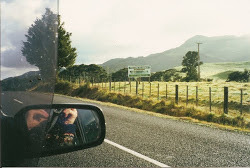
(January 1, 2011-August 14, 2012) Tree Worship.
This blog is linked to my novel The Annotated Tree Worship (Forthcoming: Pania Press, 2016), and constitutes the "research project" undertaken by that book's protagonist - with somewhat disastrous results to his professional reputation ... If parts of it seem a little unusual for me, then, it's because they are supposed to have been written "in character." I is another, as Rimbaud once put it.
•
2012:
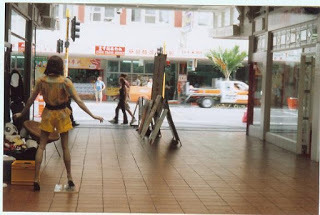
(March 31-July 3, 2012) Jack Ross: Notes on NZ Poetry (Commentary: Jacket2).
Pam Brown asked me to edit a feature on contemporary NZ poets for the American poetics site Jacket2 to match the one she was compiling on Australian poetry. It was a very enjoyable experience (the results can be looked at here, if you're curious), and it went live in late 2011.
As a result (I presume), they asked me to write a set of posts on NZ poetry and poetics for the Commentaries section of their site. This proved a little more arduous, and the results have received a certain amount of healthy criticism (not least from Vaughan Rapatahana, whose own Jacket2 commentary begins with the remark:Jack Ross has, of course, enabled a series of earlier commentaries in Jacket 2 (during 2012), where he reflected about ‘my ongoing engagement with New Zealand poetry.’ Yet, Jack, for all his ensuing comments, never touched on the first New Zealand poetry that had existed on the shores of this country for hundreds of years before any English language versifiers ever entered the scene. This, of course is ngā mōteatea Māori, which necessarily must be included as a vital and ongoing component of Aotearoa poetics. ‘Maori language and Māori oral literature may come to be seen as being … crucial to the development of New Zealand literature … an acquaintance with Māori language and literature is a necessary prerequisite for making Olympian judgments about the nature of New Zealand literature as a whole’ wrote the late Michael King back in 1993.It's hard to quarrel with Vaughan's position on that. I've tried to redress the balance a bit in my editorial to the latest issue of Poetry NZ Yearbook. There are certainly things I would probably write differently if I were to begin this task again, but one does, after all, have to start somewhere.
•
2013:
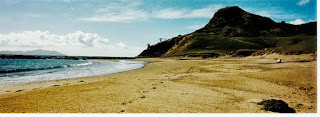
(August 18, 2013- ) Opinions: Published Articles, Essays, Prefaces & Reviews - 1987 to the present.
It sounds like a simple enough thing to do - listing your old essays and reviews on a single website - but in practice locating all the texts, scanning all the journals, and collating all the bibliographical information took far longer than I'd expected.
Nor did I have any real idea of how much work I'd actually done in this category (a few statistics: 288 separate pieces, published over 25 years, incorporating 350,633 words of text). Now that it's done, it only requires updating every time I publish something new.
Occasionally I get flack about some of the information in one or other of these ancient pieces, which makes me wonder if it was worth saving them from the newsprint they could otherwise just quietly fade away on, but I suppose one should face up to one's mistakes as well as the occasional thing I may have got right.
•
2014:
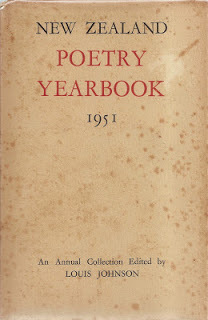
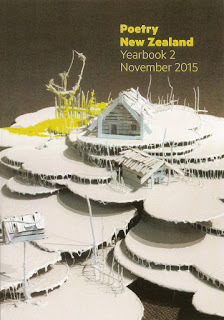
(January 1, 2014-February 17, 2015) Poetry New Zealand Index: An International Journal of Poetry and Poetics (1951-2015).
This one was a bit of a hoor to get finished, I must admit. "Never again, never again, never again," kept on shrilling through my head as I scrolled through issue after issue of New Zealand's longest-running poetry magazine, entering the contents onto my author index. But now it's done, and I never have to do it again! The only maintenance required now is to update it as each new issue comes out (something I already do - for my sins - for New Zealand's longest-running alt lit journal brief.
•
2015:
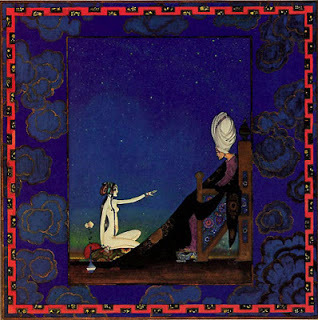
(February 25, 2015- ) Advanced Fiction Writing: 139.329: College of Humanities and Social Sciences - School of English and Media Studies - Albany Campus - Massey University.
And, last but not least, a work in progress: the website for my latest Creative Writing course, our new stage 3 Advanced Fiction Writing paper, which I'm teaching as a kind of backward glance over traversed roads, as befits its status as a follow-up to my colleague Thom Conroy's Fiction Writing course (139.285). It kicks off in semester 1, 2017.
•
What does the future hold for this blog - and for the bloggy empire to which it constitutes the gateway (38 at last count)? Who can say? These are deep waters, Watson.
More of the same, no doubt, but perhaps it might be a good idea to learn to expend my energy in ways which make more sense to the authorities presiding over my professional development: PBRF [Performance-Based Research Funding, for those of you lucky enough not to know], for instance... Nah, just kidding.
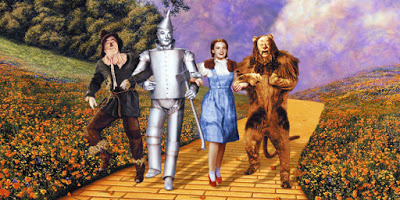
[Off to see the Wizard ...]
Published on June 13, 2016 14:42
June 6, 2016
Richard Taylor on Celanie
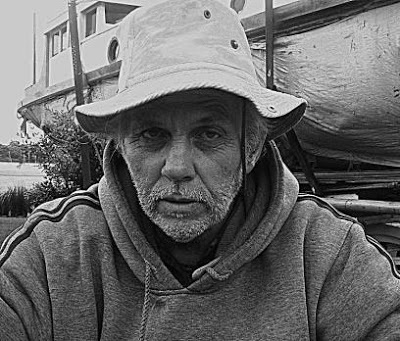
Richard Taylor (2011)
My friend Richard Taylor, author of three books of poems, most recently Conversation with a Stone (Auckland: Titus Books, 2007), who blogs at EYELIGHT and , has sent me the following hitherto unpublished review of Celanie . It was originally intended to appear in Bill Direen's journal of international writing Percutio, but grew beyond the bounds of the issue.
I'm pleased to be able to print it here instead, although it contains some brickbats as well as bouquets. Anyone who's met him knows that Richard is better read in poetry than almost anyone one could name: he does suffer from that unfortunate (and unusual) condition called honesty, however. Anyway, here it is:
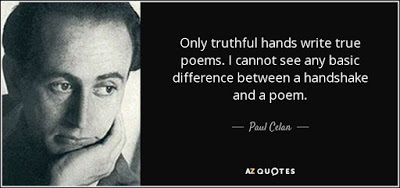
Paul Celan (1920-1970)
CELANIE: Poems and Drawings after Paul Celan
(Pania Press 2012)
Belated review of Celanie by Jack Ross and Emma Smith.
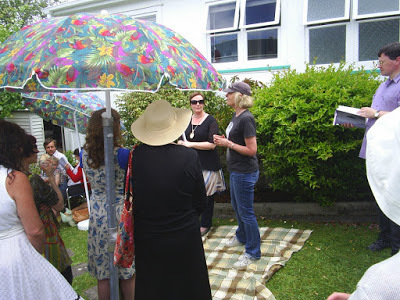
Richard Taylor: Michele Leggott speaks
[Celanie launch (25/11/12)]
Celanie was published in December of 2012, so some time has elapsed. This book is a book of translations by Jack Ross from the German to English of many of Paul Celan’s poems sent to his wife at the time in the late 60s and 70s. She was a French artist, so it is perhaps appropriate that another woman artist has added a number of works, semi-abstract that attempt to ‘capture’ the essence of a number of the poems so translated.
After mulling over this book for some time, and wondering how I would approach a review or ‘appreciation’ of the book and some discussion of Celan himself (and losing my notes I made some time ago) I have broken my ‘block’ and am now launching into what will be only the first of some literary essays, reviews, and other aspects of EYELIGHT which I will ‘place’ in this Blog, which I call my ‘control Blog’.
I also want to consider, in time, books by writers I myself have read (not necessarily recent), or by such as Ted Jenner (‘Gold Leaves’) and comment on various events personal and other. I want to emphasise again that this, all of this is still really part of my larger ‘poem’ or art-lit text called EYELIGHT, but that is for the ‘technically minded’!
Richard Taylor: Isabel Michel, Mark Fryer et al.
[Celanie launch (25/11/12)]
So Celan. Firstly the launch. It was a hot day and Michele Leggott, one of NZ’s most outstanding poets, gave a speech endorsing the book. Her emphasis was on the intensity of Celan’s poetry [and I will ‘cheat’ here, as I have it from the NZEPC] that her, and perhaps Jack’s ‘take’ on these poems, which were sent with letters to Celan’s wife, was that that intensity derives not only from the well known factors of Celan’s life and poetics but that in fact they were essentially ‘love poems’.
His wife, to whom the letters (in French) and poems (in German) were sent, was Gisele Celan-Lestrange. Due to Celan’s deteriorating mental condition (or so it seems) and some violence, they were separated, but perhaps still in love and these were seen as poems of love. Also, if one agrees with J. M. Coetzee, they are poems to God, and they are poems to the Third Reich.
But Michele saw them as great poems to which she – and one would expect this of a poet of her genius – responded with great emotion and acuity. It took me a long time to come to any such appreciation or view of these poems but, and I will get to this later, I have always struggled to get, poetically or psychically one might say, as much from Celan as say, poets such as (for me) the great poet John Berryman (who also was tormented all his life by a family tragedy and also committed suicide by jumping off a bridge). I have also, of course, been deeply moved by works by Primo Levi (not a poet), and Anne Frank. The first survived Auschwitz but not the second, and it might be argued that Celan also failed to survive the deaths of his parents by the Nazis.
Richard Taylor: Karl Chitham, Therese Lloyd et al.
[Celanie launch (25/11/12)]
Coetzee, in the essay "“Paul Celan and his Translators,” from his book of criticism Inner Workings: Literary Essays 2000 – 2005 (2007), if we take him literally, might “disagree” with Leggott and others, but he has a point, for in many of these poems, and others I have seen (such as those in Breathturn by Pierre Joris) it seems always that Celan is struggling, not only to encapsulate, more and more complexly and riddlingly (and ingeniously if one can read German which unfortunately I cannot, but this has been reported by those who can): more and more desperately it seems his ‘messages in bottles’ (as Scott Hamilton, when he first ‘introduced me’ to Celan, said someone had said of his works) are complex cries for some kind of redeeming meaning in the world that, with the loss of his parents, and millions of fellow Jewish people, and the fact of his tragic love-hate of the language that, for him and his parents had been, not only their main spoken language, but a language of a great culture of Goethe, Rilke, Mann and such as Richard Strauss, and earlier, Bach, Mozart, Beethoven (and yes, Nietzsche and Wagner) and so much else (including maybe my own favourite pre-war German poet Georg Trakl).
These, or some of these artists and writers, were only some of those that Celan’s parents had loved. But they had been murdered by Germans.
This left Celan to reinvent himself and attempt to continue, alone, without parents, and unable for probably deep psychological reasons (and because of a gathering storm of conflict in his own mind as a creative writer, torn between his intense need to write), to avoid writing in German. It was the main language he had used already to write poetry prior to the horrors of WW2. And he was primarily a poet, but a man, aggrieved, and thus deeply conflicted. In my own opinion he thus began a long conversation with himself and God, or to whatever and whoever one feels is 'out there'. However, this is from a relatively limited study of Celan on my part, as well as the aforementioned view of Coetzee.
Celan’s early poem, the famous "Todesfuge" [Deathfuge], is hauntingly powerful and an indictment of Nazi Germany, and was a cry of protest to Germans and others. However it was perhaps so strange, or read too soon after the war (at poetry gatherings) that it wasn’t understood in many cases, and Celan was accused of ‘sounding like Goebbels’. But it is not. It is simply a great poem and goes for the jugular.
Richard Taylor: Jack reads
[Celanie launch (25/11/12)]
However, Celan was not only a ‘political poet’, he wanted to write poetry of language and meaning. He did so, and became one of the greatest modernist poets. His poetry (mostly in German) has been deeply analysed. Someone, reviewing Jack and Emma’s book, felt that there needed to be more explanation of the complexity inherent in that original German. That Ross could have pointed out that the word ‘Farben’ means colour but refers to the company that made the gas that killed the Jews.
Perhaps, and indeed a larger book may have had some such discussion and analysis, but that we have this translation here means that a reader, regardless of their knowledge of German, or what Celan was ‘about’ has the means to gain some (possibly further) insight into the (admittedly difficult and sometimes perhaps too prolix or ‘tortured’ – although that ‘tortured’ or ‘burnt’ nature tells us something about the poems and the poet, so perhaps not ‘too’) strange poetry of Celan. The critic might have mentioned the word ‘Mandel’ which means ‘almond’ and also refers (probably) to the Russian poet Mandelstam and to the scent of the gas, which was, apparently, like that of almonds.
And the gas killed at least 6 million Jews. Mandelstam and many other intellectuals faced a similar if stranger holocaust in Stalin's Dictatorship of the USSR.
Richard Taylor: Jack reads some more
[Celanie launch (25/11/12)]
Celan’s parents and the Jewish people dig their grave in the air in the early "Todesfuge":a man lives in the house your golden hair Margarete
your ashen hair Sulamith he plays with the serpents
He calls out more sweetly play death death is a master
from Germany
he calls out more darkly now stroke your strings then
as smoke you will rise into air
then a grave you will have in the clouds there one
lies unconfined
Emma Smith: Drawings from Celanie (2012)
However, Jack Ross and Emma Smith’s book has his later, more complex, but concentrated poems, and includes Smith's haunting images of what are abstracts or semi-abstracts modeled on a sheep’s skull. These make it seem almost as if we are looking into the soul of Celan: this book seems to me to do much.
Not all the poems are so good, and as far as I can tell, the German translations veer (as often with Jack Ross’s deceptive methods) to the quotidian. Yet the simplicity, or apparent simplicity that sometimes results, is not only an (possibly inevitable) effect of such a translation from the German. And, indeed, even in the earlier poems of Celan, there was an increasing move away and toward complexity and simplicity and an urge toward the almost knot-like seethe of language messages and codes which we see in Celanie. And these poems or 'messages in bottles' are speaking to the reader, as if the writer was talking to the reader but looking past into the distance.
And, as he said to his wife, who, it seemed, had great difficulty with his poems, these poems will become clear as time passes. The analogy is perhaps with Picasso’s statement about his portrait of Gertrude Stein (another great poet of some linguistic complexity and innovation), when she said it didn't look like her, that that was so: “But it will become to look like you”! Dorian Grayish! Indeed, will become. Celan insisted that his poems would come to be understood.
Richard Taylor: Jack keeps on reading
[Celanie launch (25/11/12)]
But many remain obscure, and perhaps can only be fully appreciated in the original German. In this respect I have far less trouble appreciating the poetry of Rilke (especially of the extraordinary superb Duino Elegies) or Georg Trakl, another tortured being who committed suicide, dismayed at the terrible suffering he witnessed as a doctor in WW1 (for which see further here).
Trakl is more ‘expressionist’ and perhaps slightly less inner driven (he was lumped with the so-called Hermetic school, although that perhaps oversimplifies his work, especially as it is not too clear if such a unified ‘movement’ or school ever existed.) Rilke too is more expansive.
But none of these writers benefited from reading Laforgue, great poet, but saved also by his clever satire, although influenced somewhat by Whitman. Thus many of the contemporaries of T. S. Eliot, who did discover Laforgue, as perhaps in his own way, Auden of The Orators was to use the writing of Stein. But neither of these was so close to blood: to war, to the Holocaust, the terrible Shoah.
Richard Taylor: Richard von Sturmer, Mark Fryer et al.
[Celanie launch (25/11/12)]
Were Trakl and Celan too close to these events? The Italian poet Ungaretti, also like Trakl in WW1, wrote poems of great and moving intensity and beauty that are perhaps closer to those of Keith Douglas than Wilfred Owen or even David Jones. But each man or woman caught in the weave of these historic events experiences them in different ways and sees through different eyes.
Celan was not a ‘war poet’ but the effects of the Holocaust and the war are clear. His own reaction was to drive inwards into himself so that it seems to me that John Berryman, who also struggled for his own self’s survival through his art (and terrible alcoholism in his case), is a closer tragic parallel. Both writers, while stylistically rather different, but struggling in similar ways, were deeply read in literature. Celan knew of Rilke, Holderlin, Mandelstam and many of the other great poets. He had married and had a child, and there seemed some hope, but perhaps like Primo Levi, the trauma, the loss, were ultimately all too much.
It must be noted that Ross has included an excellent and revealing introduction showing how he came to translate these poems and the importance that these poems were to Celan, sent with letters to the woman he loved.
Richard Taylor: Winding down
[Celanie launch (25/11/12)]
Jack Ross and Emma Smith have created a singular book in Celanie which also refers to that area of Paris that Celan lived in, the places he moved to. Also working here is the concept of translating these poems that accompanied personal letters, that in fact were written at a time when Celan was struggling with a deep disorder in himself, and was to take his life not too long after the last of these were written, has brought another valuable addition to the culture. By culture I mean not only that of NZ, but the world, and to literature everywhere Celanie can reach.
That these are not always ‘great’ translations, is perhaps real, but, in reading Breathturn (by Pierrre Joris who is German-English speaking and spent some years working on that book), I didn’t find all those poems (or translations of poems) to move me in many cases (some did) is much the same as I find with Ross’s work. Perhaps one misses the German. It seems good to see the German (or the original language) beside the translated text even if one has little knowledge of that language. And perhaps more of the letters. Perhaps. But I feel the criticisms were a little too severe. I also find that perhaps only 20 of the 100 or so poems affected me strongly. But of Breathturn there was perhaps a similar ratio.
Richard Taylor: Michele Leggott, Kelly Malone et al.
[Celanie launch (25/11/12)]
What is the difficulty? Perhaps it is the ‘failure’ of translators. It is true that Ross combines an attempt to render the ‘urgency’ or Celan’s lines with an almost casual, almost idiomatic style that might upset purists, but there is merit in that, by this method, the reader’s attention is shifted from any fixation on autobiography. And many will see this as the central fact of Celan, which might move them too much from the poems themselves. His life and experiences count for a lot, that is obvious, but what we see here is a struggle, not only with the self and history, but for love and for art. Art was his legacy: a sometimes infuriatingly in-spiraling vortex of reforged suffering. But it was more than that. It was a unique art of language, and even of play, the play of light against shade.
But more likely than any supposed failure (all translations of any work will be different, so failure is not the term): it is perhaps simply the difficulty of translating a poet who, not in all cases, but many, uses a complex of double or triple meanings, obscure references, ambiguities and other Modernist devices, such as sound, and neologisms, often in the form of compound words. Such things can be nearly impossible to render into another language. It is at least a hard task. But this is the nature also of the writer, as his difficulty, his coding of complex linguistic references and sound puns etc, was that of an innovative poet, who, like Stein, was struggling to create something new. His brief was not only to record history or his own anguish (although that is there), but history and a unique art. The art of his poetry, some permanence. His way of surviving as a Jew and a human being.
It seems to me, that while I struggle with Celan, this is not a new thing, and Celanie is a book I am glad to possess.
Richard Taylor: Emma Smith
[Celanie launch (25/11/12)]
The art of Emma Smith is a great addition to it and the work is rightly the work of Emma Smith and Jack Ross together. Art and language interact.
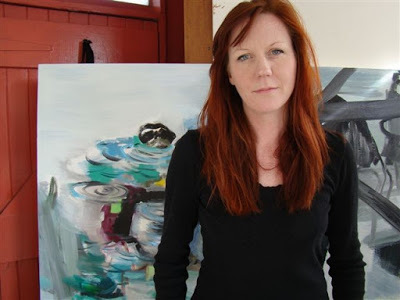
Emma Smith (2011)
Published on June 06, 2016 14:02
June 3, 2016
Collecting Paul Celan (2)
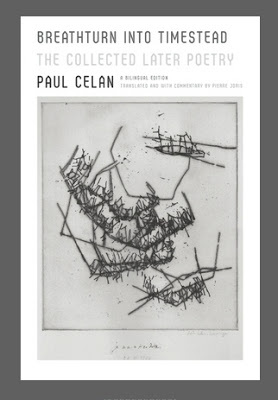
Paul Celan: Breathturn to Timestead: The Collected Later Poetry,
trans. with a commentary by Pierre Joris (2014)
Quite some time ago now (2011), I wrote a post, Collecting Paul Celan, which listed most of the salient books by and about Paul Celan then available in English. There are now some new ones which deserve celebration, however.
It's now (almost) possible to read all of his complete published books of poetry in English translations, for instance. That might seem like an odd thing to want to do, but there's certainly a strong argument that each of them is a coherent work in itself:
Der Sand aus den Urnen [The Sand from the Urns] (1948)
This, the first of Celan's collections, appeared in a form so riddled with errors and misprints that he disowned it soon after publication. It does, however, include his most famous poem, "Todesfuge."
Mohn und Gedächtnis [Poppy and Memory] (1952)
The contents of Celan's first collection were reprinted here in a corrected form, together with much new material. Nobody has yet provided us with a complete translation of the book, though there are substantial selections from it in the translations by Michael Hamburger (1988) and John Felstiner (2001), among others.
Von Schwelle zu Schwelle (From Threshold to Threshold] (1955)
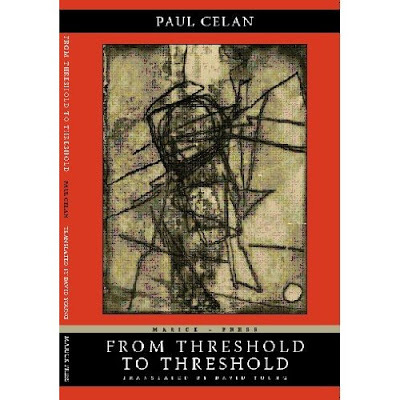 [Paul Celan: From Threshold to Threshold]
[Paul Celan: From Threshold to Threshold]Celan, Paul. From Threshold to Threshold. 1955. Trans. David Young. Grosse Pointe Farms, Michigan: Marick Press, 2010.
Sprachgitter [Speech Grille] (1959)
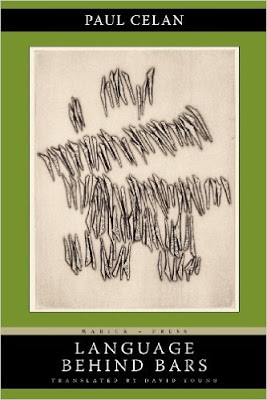
[Paul Celan: Language Behind Bars]
Celan, Paul. Language Behind Bars. 1959. Trans. David Young. Grosse Pointe Farms, Michigan: Marick Press, 2012.
Die Niemandsrose [No One's Rose] (1963)
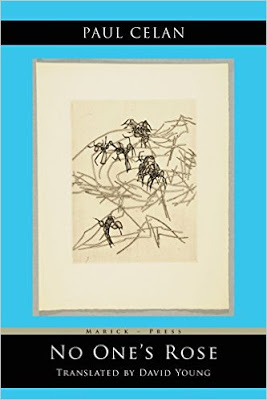
[Paul Celan: No One's Rose]
Celan, Paul. No One's Rose. 1963. Trans. David Young. Grosse Pointe Farms, Michigan: Marick Press, 2014.
Atemwende [Breathturn] (1967)
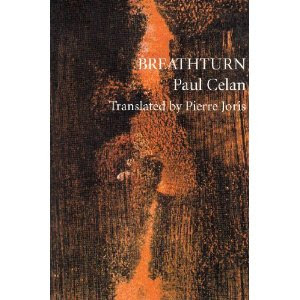 [Paul Celan: Breathturn]
[Paul Celan: Breathturn]Celan, Paul. Breathturn. 1967. Trans. Pierre Joris. Sun & Moon Classics, 74. Los Angeles: Sun & Moon Press, 1995.
Fadensonnen [Threadsuns] (1968)
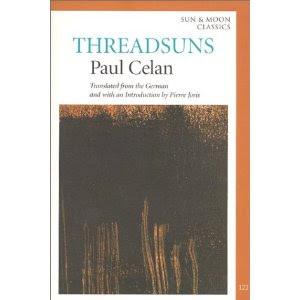 [Paul Celan: Threadsuns]
[Paul Celan: Threadsuns]Celan, Paul. Threadsuns. 1968. Trans. Pierre Joris. Sun & Moon Classics, 122. Los Angeles: Sun & Moon Press, 2000.
•
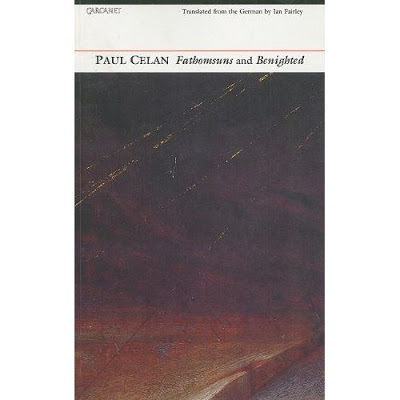 [Paul Celan: Fathomsuns]
[Paul Celan: Fathomsuns]Celan, Paul. Fathomsuns / Fadensonnen and Benighted / Eingedunkelt. 1968. Trans. Ian Fairley. Manchester: Carcanet Press Limited, 2001.
Lichtzwang [Lightduress] (1970)
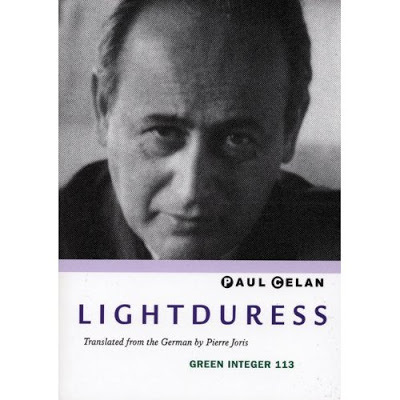 [Paul Celan: Lightduress]
[Paul Celan: Lightduress]Celan, Paul. Lightduress. 1970. Trans. Pierre Joris. Green Integer, 113. København & Los Angeles: Green Integer Books, 2005.
Schneepart [Snow Part] (posthumous: 1971)
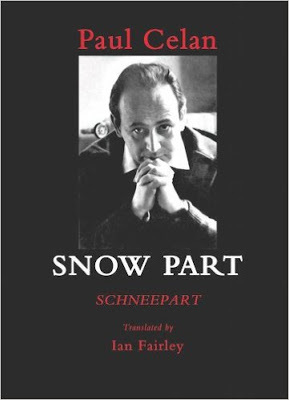
[Paul Celan: Snow Part]
Celan, Paul. Snow Part / Schneepart. 1971. Trans. Ian Fairley. Riverdale-on-Hudson, New York: The Sheep Meadow Press, 2007.
Zeitgehöft [Timestead] (posthumous: 1976)
•
So, to summarise, Paul Celan's 1955, 1959 and 1963 collections are now available in single-volume, dual-text translations by David Young. Celan's three subsequent collections (dated 1967, 1968, and 1970), together with the two posthumous collections (1971 and 1976) are all included in Pierre Joris's new book Breathturn to Timestead: The Collected Later Poetry (New York: Farrar, Straus & Giroux, 2014).
To complicate matters somewhat, Ian Fairley has provided us with his own single-volume editions of Fadensonnen [Fathomsuns] (1968) and Schneepart [Snow Part] (1971), so there we have some doubling up.
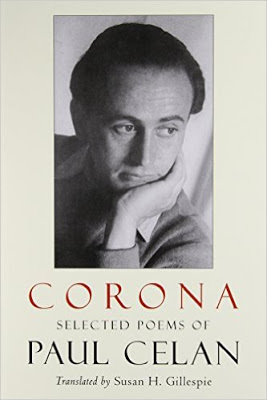
[Paul Celan: Corona, trans. Susan Gillespie (2013)]
What else? Susan Gillespie has provided an attractive new selection from Celan's poetry (Corona: Selected Poems of Paul Celan. Trans. Susan H. Gillespie. Station Hill of Barrytown. New York: Institute for Publishing Arts, Inc., 2013). No doubt there will be many more such to come.
•
On a rather more egotistic note, my own Celan versions from Celanie: Poems & Drawings after Paul Celan (Auckland: Pania Press, 2012) can also be accessed here, together with Emma Smith's wonderful drawings here, as well as various textual notes. "The Twenty-Year Masterclass," my introduction to the book can be read here.
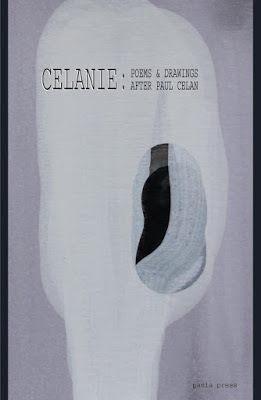
[Jack Ross & Emma Smith: Celanie (2012)]
•
Published on June 03, 2016 14:58
May 29, 2016
The Age of Slaughter
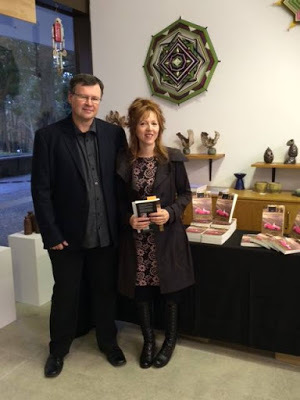
Tracey & me
Tracey Slaughter's Booklaunch
[26/5/16]
So on Thursday Bronwyn and I drove down to Hamilton for the launch of Tracey Slaughter's latest book, deleted scenes for lovers.
Here's Tracey with her book (unless otherwise noted, all the pictures in this post have been borrowed from Mayhem Literary Journal's facebook page):
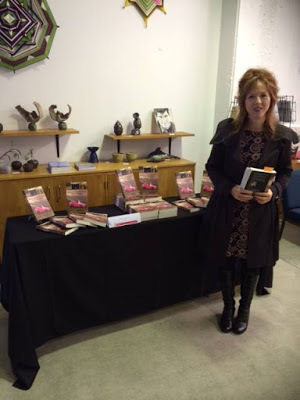
Tracey & books
The event was very ably MC'ed by Waikato University's own Mark Houlahan:
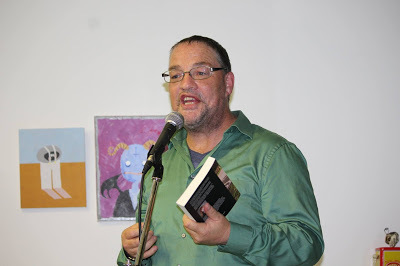
Mark Houlahan
It was very well attended:
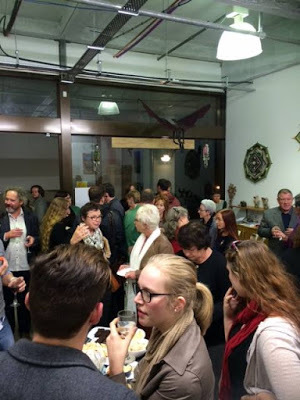
The Crowd in the Gallery
The speakers included her publisher, Fergus Barrowman, of Victoria University Press:
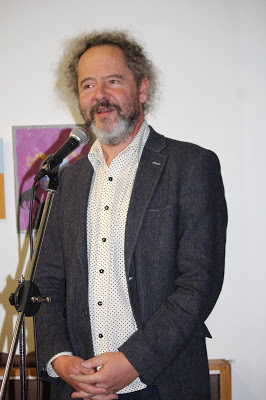
Fergus Barrowman
Distinguished novelist (and Tracey's good friend) Catherine Chidgey:
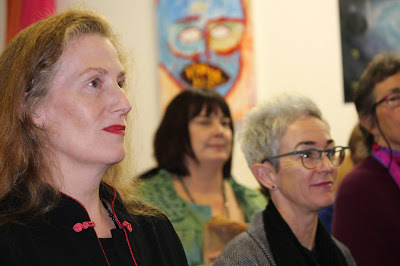
Catherine Chidgey
And also me, making the official launch speech:
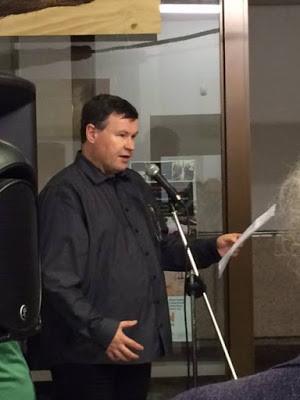
Me launching the book
And, for those of you who are curious, here it is:
Tracey Slaughter. deleted scenes for lovers. Wellington: Victoria University Press, 2016.
There are many great New Zealand poets, novelists – and creative writers generally, but I still feel confident in claiming that the short story is the genre in which we’ve most distinguished ourselves.
To my mind, these are the four great epochs of the New Zealand short story:
First (of course) the Age of Mansfield: It’s fair to say that the atmospheric intensity of Katherine Mansfield’s fiction was helped by her reading of Chekhov, Flaubert and Maupassant. But I think her work would have developed that way even if she’d never encountered them.
Secondly, the Age of Sargeson: Again, there were outside, mainly American influences on the innovations pioneered here by Frank Sargeson. But his exploration of the literary resources of the New Zealand vernacular – breaking away from dialect as a kind of comic turn – remains revolutionary.
The chronology gets a bit more shaky after that, but the next great age, for me, is the Age of Marshall. Owen Marshall – still with us, fortunately – with his immense body of work exploring the New Zealand experience in all its multifaceted variety, built on the work of previous writers such as Maurice Duggan to present a more consciously symbolic reading of the landscape and mores of the country.
And now we come to the Age of Slaughter. This last category may rouse a bit more controversy. There are, to be sure, many fine practitioners of the art of the short story in New Zealand right now: Breton Dukes, Sue Orr, Alice Tawhai, to name just a few. What is it about Tracey’s work which gives it such extraordinary significance?
It’s not simply a matter of talent – though I would defy anyone to read Tracey’s latest collection, deleted scenes for lovers, which I feel so privileged to be here today to launch, and question the sheer magnitude of her ability as a writer: her ear for language, the mythopoeic intensity of her imagination. No, it’s more of a question, for me, of a paradigm shift.
This is one I’ve been sensing for quite some time, both in the work I receive as an editor, and the kinds of writing I see our students starting to produce – since Tracey and I both work as teachers of Creative Writing.
The Age of Slaughter, for me, has an Apocalyptic air. The authors born into it, or who inhabit it by necessity, feel at home with intense emotion. Unlike the schools of the laconic and the ironic that preceded them, they have no problem with excess, with big themes and extravagant linguistic tropes.
There’s a certain black humour about them, too: like William Faulkner, Tracey writes about situations so devastating that she almost forces us to laugh. Sometimes, as in the passage from a projected memoir with which she won the Landfall essay prize last year, she jets out passages of jewelled prose so intense and dazzling that we hardly notice the banalities of the seventies key party and ranch slider aesthetic that underlies them.
Both Sargeson and Marshall specialised in apparent simplicity: a straightforward surface concealing strange depths. Tracey, by contrast (I would argue), has taken inspiration from Mansfield’s late stories to use the full resources of a poet’s word-palette when painting her complex and devastating scenes. You always have to read a Tracey Slaughter story twice: even then some of its subtleties may lie in wait to ambush you later.
Courage, however, is the word which most frequently comes to my mind when I read Tracey’s work. She goes places others (including myself) are afraid to. The interrogation of the word “consent” in the story of that name, the sheer intensity of the wish for escape and freedom in “How to Leave Your Family,” the dark close of “The Longest Drink in Town” – there’s no holding back in any of these pieces. But neither is there any over-simplification, no failure – above all – to find the “right word, not its second cousin,” which Mark Twain defined as “the difference between lightning and a lightning bug.”
If you want to know where New Zealand culture is right now, read Tracey Slaughter. Buy her book; get her to sign it; you won’t regret it. I’ll go further. Even if many of you couldn’t care less about New Zealand writers and their various turf wars and attempts at self-definition (why should you, after all?), if you want to know how it feels to live in this country: to recognise the thousand small details that go to make up a sense of place: the feel of wet flannelette pyjamas on a child who’s wet the bed; how it feels to kiss a smoky mouth you shouldn’t, read Tracey Slaughter.
To say I recommend this book is to put it mildly. I think it’s an indispensable book. This is our Prelude, our That Summer, our The Day Hemingway Died. This is no drawing-room talent we’re talking here: this is Tracey Slaughter. And for better or worse, in all its beauty and complexity, but also its fears and devastations, its intimations of total eclipse, this is the Age of Slaughter.
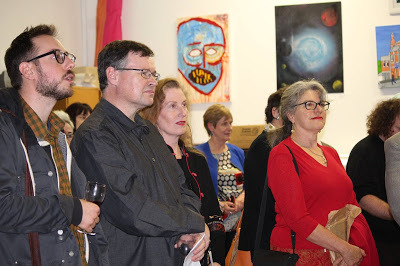
Steven Toussaint, Catherine Chidgey, Catherine Wallace et al.
Congratulations, Tracey!
Published on May 29, 2016 14:57
May 10, 2016
Movies about English Teachers
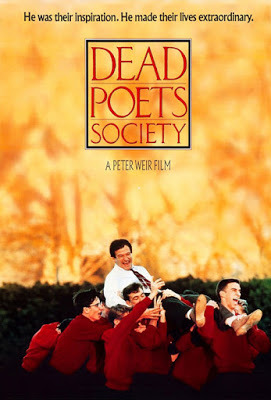
Peter Weir, dir. Dead Poets Society (1989)
The moment I'd posted the previous list, Bronwyn pointed out a whole lot of movies I'd left out. I still think there's a slight difference between inspirational English teacher movies and inspirational university Creative Writer teacher films, but I agree that there's not a lot in it.
Is there anybody on the planet who hasn't watched Robin Williams getting his students to stand on top of their desks, judging how they walk, and telling them to rip out the introduction to their poetry anthology? It's a pity that Vachel Lindsay's "The Congo" seems to be their poem of choice (though Shakespeare gets a bit of a look-in, too), but there's no doubt that this is the King Kong of English teacher movies.
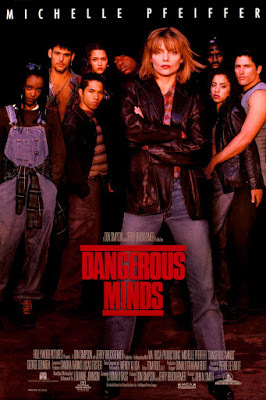
John N. Smith, dir. Dangerous Minds (1995)
Michelle Pfeiffer as a poetry teacher, yes, I can see that (just). Michelle Pfeiffer as an ex-Marine - we-ell, that's a bit harder to swallow.
Much ranting about Dylan Thomas is how I remember her pedagogical approach ("when you can read poetry, you're loaded for bear!"). Oh, and the Dylan-Dylan challenge ... Great sound-track album, though, definitely (even before the Mad Al Yankovich parody).
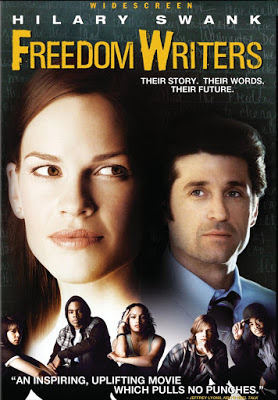
Richard LaGravenese, dir. Freedom Writers (2007)
While it seems to have sunk without a trace, and was a little clunky in its construction, this movie really packed a surprising punch, I thought. And it really did preach the virtues of writing things down - if not to exorcise them at any rate to assert some sort of control over them.
In fact, looking through the page of quotes from it on the IMDB, I feel like watching it again. Here's one of the quotes from Hillary Swank's character, Erin Gruwell, who's just found a racist drawing by one of the students, Tito:
Maybe we should talk about art. Tito's got real talent, don't you think? You know something? I saw a picture just like this once, in a museum. Only it wasn't a black man, it was a jewish man. And instead of the big lips he had a really big nose, like a rat's nose. But he wasn't just one particular jewish man. This was a drawing of all jews. And these drawings were put in the newspapers by the most famous gang in history. You think you know all about gangs? You're amateurs. This gang will put you all to shame. And they started out poor and angry and everybody looked down on them. Until one man decided to give them some pride, an identity... and somebody to blame. You take over neighborhoods? That's nothing compared to them. They took over countries. You want to know how? They just wiped out everybody else. Yeah, they wiped out everybody they didn't like and everybody they blamed for their life being hard. And one of the ways they did it was by doing this: see, they print pictures like this in the newspapers, jewish people with big, long noses... blacks with big, fat lips. They'd also published scientific evidence that proved that jews and blacks were the lowest form of human species. Jews and blacks were more like animals. And because they were just like animals it didn't matter if they lived or died. In fact, life would be a whole lot better if they were all dead. That's how a holocaust happens. And that's what you all think of each other.
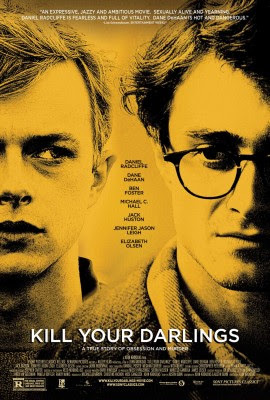
John Krokidas, dir. Kill Your Darlings (2013)
I suppose that this is more of an anti-English teacher film than one in praise of them. Nevertheless, at the end the pompous Wlat Whitman-hating Professor ends up encouraging Ginsberg to keep on writing.
Some nice quotes from this one on teh IMDB, too:
William Burroughs: Show me the man who is both sober and happy, and I will show you the crinkled anus of a lying asshole.
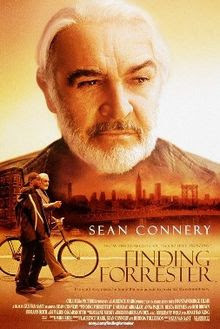
Gus Van Sant, dir. Finding Forrester (2000)
Ditto this one. The J.D. Salinger-like "Forrester" of the title encourages the young black writer despite all the put-downs he gets from his loathsome teacher F. Murray Abraham.
The best scene is probably the one where Sean Connery is telling his protege to really bash those typewriter keys: "Now you're cooking ... You're the man now, dog!"
No thinking - that comes later. You must write your first draft with your heart. You rewrite with your head. The first key to writing is ... to write, not to think!
I suppose films based on romantic images of J. D. Salinger would take us to Field of Dreams:
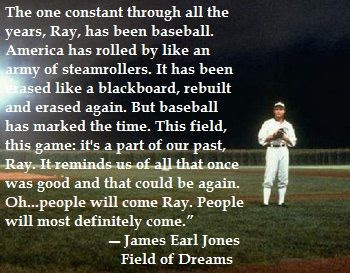
Phil Alden Robinson, dir. Field of Dreams (1989)
While "poetic mentor" films would take us to the more recent Set Fire to the Stars (based on John Malcolm Brinnin's tell-all 1955 memoir Dylan Thomas in America). You have to call a halt to the process sometime, though. In any case, the real - rather unexpected - star-turn in this Dylan Thomas bio-pic was Shirley Henderson playing horror novelist Shirley Jackson (though, strangely enough, she goes unnamed in the cast list, and the role isn't even listed on the actress's wikipedia page. Maybe something ... uncanny happened during filming. Maybe they all drew lots in some unspeakable ceremony. Maybe they all swore never ever to tell anyone anything about it ... on pain of death):
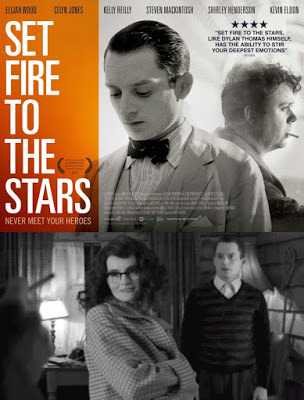
Andy Goddard, dir. Set Fire to the Stars (2014)
Published on May 10, 2016 20:48
May 7, 2016
Movies about Creative Writing Teachers
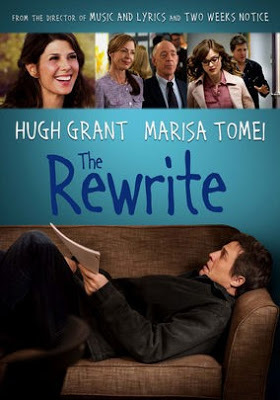
Marc Lawrence, dir. The Rewrite (2015)
Bronwyn and I were watching this truly silly Hugh Grant vehicle the other night, when I got to thinking about the portrayal of Creative Writing teachers on screen - to date, at any rate. Strangely enough, there were one or two moments during the film when I got a faint intimation that its author (also its director) might know something about what he was talking about.
Hugh Grant was turning in his usual foppish performance as ineffectual-Englishman-abroad, but sometimes - such as the moment when he was forced to face the full horror of a Creative Writing class he hadn't prepared for at all - when it began to resemble reality for a brief instant.
His method of evaluating portfolios - consisting of checking out their respective author's profile pictures on facebook, rather than actually reading any of them - had a certain undeniable panache, but it was when I found I was actually taking note of some of his techniques and resolving to try them out next time I'm in class, that I realised that the movie was working for me, at least: despite the complete lack of any screen chemistry between Hugh Grant and Marisa Tomei; despite the floppy, rather pointless ending.
That's pretty sad, isn't it? Taking pointers from Hugh Grant. I must be desperate.
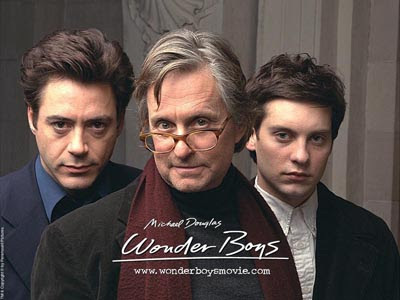
Curtis Hanson, dir. Wonder Boys (2000)
It got me to thinking, though. What are some of the other notable Creative Writing teacher performances in cinema history? I was very shocked indeed to discover, a few years ago, that none of my colleagues had ever even seen the Great-Grandaddy of them all: Wonder Boys.
I'm afraid that this film has been in my personal pantheon for so long that it is, for me, beyond all criticism. I know people say that Michael Douglas was miscast, that he's too old, that he doesn't look enough like an intellectual ... etc. etc. Blah blah woof woof - as Jessica Alba once memorably put it in an episode of Dark Angel.
Who the hell cares what he looks like? Whether there's even the slightest plausibility in any of the events of that long strange weekend in Pittsburgh, the weekend of Word-fest?
"That book of yours must have been one nutty ride," as one of the bit-players remarks to Grady Tripp, Michael Douglas's character in the movie, author of Arsonist's Daughter, "a little book I wrote 'under the influence,' as you put it, which happened to win a little thing called the P.E.N. award," as he points out pompously to Katie Holmes, who is trying to persuade him to edit out one or two little details ("the characters' dental records, the genealogies of their horses") from his latest opus.
I find myself quoting from it at least once a day: "As fit as a fucking fiddle" - Grady's description of Tobey Maguire's character, aka: "James Leer, Junior Lit major and sole inhabitant of his own gloomy gulag", whom he's just caught with a loaded gun out in the garden of the Vice-Chancellor's house; "Jesus, what is it with you Catholics?" - the "sensitive" response to James's latest story from one of his classmates; "Sometimes people just need to be rescued" - when Grady and his editor bust James out of his grandparents's house, leaving a dead dog behind in his bed to act as decoy:
"Spells? Jesus, James, you make it sound like we're in a Tennessee Williams play. I don't get spells." / "What do you call them, then?" / "Episodes."I love the way that nobody uses anything but a typewriter to produce their various works, short or long, with somewhat unfortunate results when it turns out that Grady, for one, does not make copies. "It's not dark yet, but it's getting there," as Bob Dylan puts it in one of the two songs he contributed to the film.
"It's nice to know that the youth of America are in safe hands" is Robert Downey Jr.'s parting shot as he disappears into the Dean's office to attempt (with mixed success) to parley them all out of trouble.
Part of it is the excellence of the book it's based on, of course. Michael Chabon's second novel is yet another long love-letter to Pittsburgh, his "drug of choice," as Grady characterises Frances McDormand's taste for the written word. Whole sections and subplots of the book have been left out of the cinematic version. What is there, however, rings true enough to Chabon's semi-autobiographical tale of a writer caught in the trap of an unfinishable and uncomfortably vast second novel, after the breakthrough ease of his first, the Great Gatsby-like Mysteries of Pittsburgh.
Mostly, though, it's just that even though our professional (and private) lives could never bear the faintest resemblance to Grady's (perish the thought!), one can't help feeling at times that they should - that it should be as cool a thing to do as Michael Douglas makes it. For me, this is the closest thing to Holy Writ the profession has yet inspired.
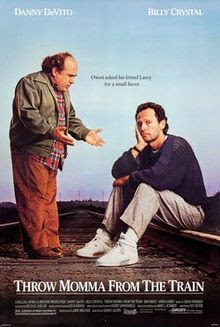
Danny DeVito, dir. Throw Momma from the Train (1987)
When it comes to quotable quotes, though, this early effort by Danny DeVito and Bily Crystal is pretty impressive, too. The DeVito character's "short stories" - all of which run something like "He came into the room. He was carrying an axe. He hit her with it again and again and again. Until she was dead" - are quite effective, as are Billy Crystal's attempts to improve them a bit: "There's no real suspense. We don't get to know any of the characters, to feel for them, before they get killed - perhaps instead of killing her he could offer her a mint julep?"
Good, too, are Crystal's struggles with the first line of his new novel: "The night was ..." hot, sweaty, cold, dark, humid - culminating in the "Momma" character's suggestion: sultry. "I'll kill her myself," shouts Crystal. Maybe because she's a better writer than he is.
The term "criss-cross" certainly entered my vocabulary thanks to this film. For years, though, I was under the impression that it was an actual quote from Hitchcock's Strangers on a Train, which Throw Momma from the Train sets out to parody with such vigour. Not so, it would appear. It's all Danny DeVito (or, I suppose, the screenwriter, Phil Silver).
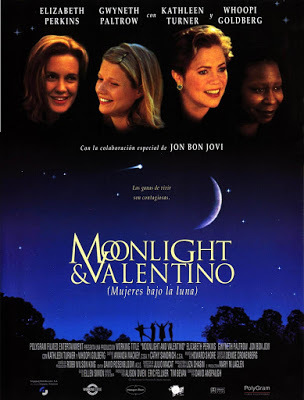
David Anspaugh, dir. Moonlight and Valentino (1995)
Finally, last and probably least, there's this little zircon from the mid-nineties. At the time I had a bit of a crush on Elizabeth Perkins, who plays an uppity poet forced to teach Creative Writing classes for a living after her husband dies in this otherwise forgettable rom-com. I can't quite remember who gets off with Jon Bon Jovi, who plays a hunky house-painter - but the plot summary on the Internet Movie Database says that he "profoundly affects" each of the four female star's lives.
I do remember a scene in class where Elizabeth Perkins is trying to explain to a student why the single repeated name of his girlfriend does not constitute a poem. He keeps claiming that to make any addition to the word would be pointless: it already expresses all the meaning in the universe. She keeps on arguing that his work cannot be expected to connect with an audience who've never actually met her. He says that he doesn't care.
I suppose what interested me about the scene was the way in which you could see the teacher gradually becoming more and more persuaded of the merits of his argument, while feeling unable to say so without letting the side down. A not too unfamiliar situation, I'm sorry to say.
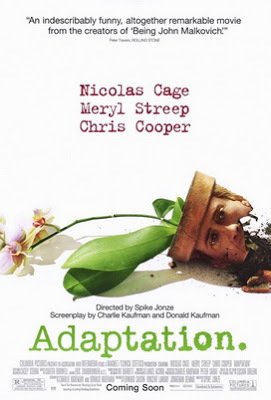
Spike Jonze, dir. Adaptation (2002)
So what do you think? There are bound to be others I've missed. I suppose one should include Charlie Kaufman's Adaptation, with its brilliant parody of Robert McKee - played by Brian Cox - and his (in)famous "story seminars."
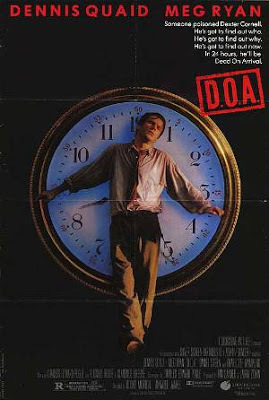
Annabel Jankel & Rocky Morton, dir. D.O.A. (1988)
Then there's a minor thriller called D.O.A. (a remake of the 1950 film noir classic), starring Dennis Quaid as an English professor who is poisoned by a colleague who is planning to plagiarise a novel by one of Quaid's students, a young man who has just committed suicide by jumping off a building (though actually he was pushed - by the colleague in question).
It turns out that the drunken slacker Quaid never even read the student's novel, simply scrawled an "A+" on the front, and so would never have been able to detect the theft. By then it's too late, though: everybody dies or goes to prison and the book doesn't even get to see the light of day. No great advertisement for the profession, to say the least.
There are plenty of other novels about writers stealing other writer's work: The Words (2012), with Bradley Cooper, would be a case in point - or the rather more amusing The Hoax (2006), with Richard Gere, about the faking of Howard Hughes' memoirs - but that's not really the same thing. There's no element of writing teaching going on in either film, so far as I can see.
The same goes for the excellent 2006 Will Ferrell / Emma Thompson film Stranger than Fiction, or the even better Love and Death in Long Island (1997), or the surprisingly entertaining Ruby Sparks (2012), or even Misery (1990) itself, for that matter - or any of the rest of those truth-gets-confused-with-fiction-in-the-screwed-up-mind-of-a-writer movies ...
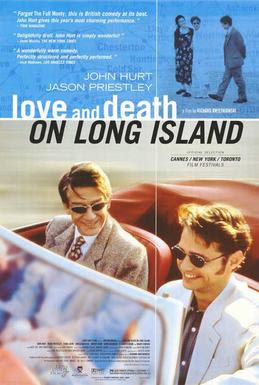
Richard Kwietniowsk, dir. Love and Death in Long Island (1997)
Published on May 07, 2016 20:48

